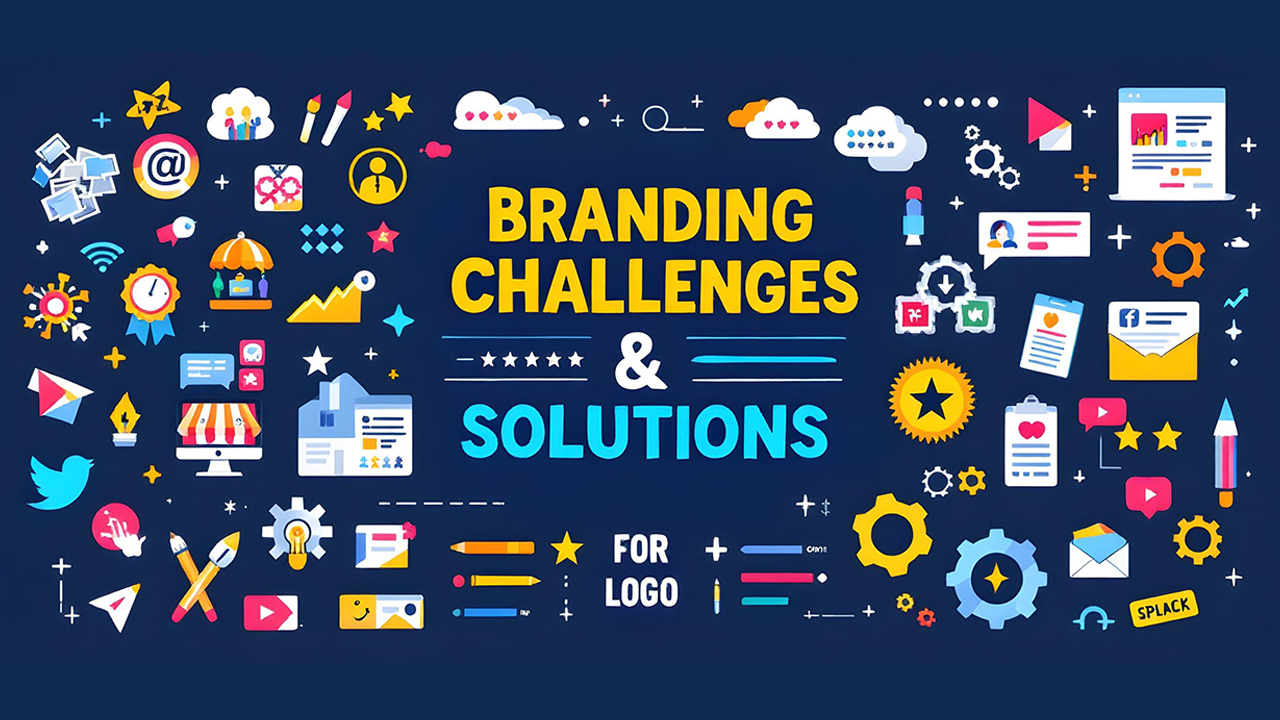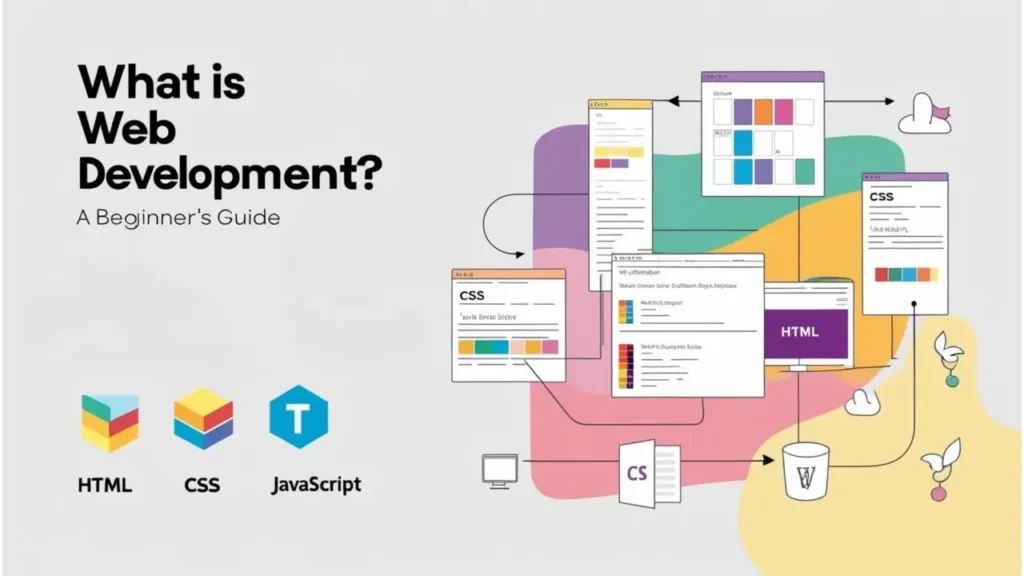In a world of rapidly shifting markets and heightened competition, branding remains the cornerstone of a business’s identity. It’s far more than just a logo, tagline, or color scheme—it encapsulates how a company presents itself, how it’s perceived, and the emotional connections it builds with its audience. A strong brand fosters trust, enhances recognition, and creates loyalty.
Yet, many businesses encounter significant hurdles when building a brand that resonates. Common challenges include design missteps, struggling to balance creativity with consistency, and dealing with negative brand perceptions.
In this article, we’ll explore the most common branding challenges in detail, provide actionable solutions, and showcase how WODO’s Design and Branding Services can help you craft a unified, compelling brand. Whether you’re a startup or an established business, overcoming these challenges will allow you to leave a lasting mark in your industry.
Key Takeaways
- Consistency builds a recognizable and trustworthy brand identity.
- Align your design strategy with your audience’s preferences to avoid common mistakes.
- Balance creativity with consistency to innovate without sacrificing brand cohesion.
- Address negative brand perceptions promptly and transparently to rebuild trust.
- Expert services, such as WODO’s solutions, ensure a strong and impactful brand presence.
Table of Contents
Understanding Branding Challenges
Branding challenges arise when businesses fail to develop a clear, well-structured branding strategy. To understand these challenges fully, we need to examine the root causes and the consequences they carry for businesses of all sizes.
Lack of Clear Branding Goals
One of the biggest obstacles businesses face is the absence of clear, measurable branding goals. Branding is often treated as an afterthought or a one-off project, leading to inconsistent execution.
Why This Happens:
- Teams work in silos, leading to fragmented messaging.
- Leaders focus on short-term marketing goals rather than a long-term branding vision.
- No formalized brand guidelines exist, leaving creative direction open to interpretation.
Consequences of Undefined Goals:
- Confused messaging that leaves customers uncertain about the brand’s identity.
- Poor alignment between the brand and customer expectations.
- Reduced competitive edge due to lack of differentiation.
Solutions to Overcome Undefined Branding Goals:
1. Start with a Mission, Vision, and Values Statement:
- Mission Statement: What your brand does, who it serves, and how.
- Example: Nike’s “To bring inspiration and innovation to every athlete in the world.”
- Vision Statement: Your long-term goal for the future.
- Core Values: Guiding principles that influence your brand’s culture and decisions.
2. Set SMART Goals for Branding:
Use the SMART framework to define goals:
- Specific: “We aim to increase brand recognition by 20% in 12 months.”
- Measurable: Track KPIs such as customer retention, social mentions, or NPS (Net Promoter Score).
- Achievable: Goals must align with your resources and capabilities.
- Relevant: Ensure goals align with your business’s core objectives.
- Time-bound: Define realistic deadlines.
3. Unify Internal Teams Around Branding Guidelines:
Conduct branding workshops to ensure every department understands and aligns with the company’s messaging, tone, and visuals.
Neglecting Market Research
Failing to understand your target audience can render even the most visually stunning brand ineffective. Without research, businesses risk creating branding that doesn’t resonate with their customers.
Why This Happens:
- Over reliance on intuition instead of customer insights.
- Budget constraints leading to skipped research phases.
- Lack of competitor analysis.
Consequences of Ignoring Market Research:
- Branding misalignment: The tone, visuals, and messaging may fail to connect with the audience.
- Missed opportunities for differentiation.
- Reduced ROI on branding efforts.
Solutions to Conducting Effective Market Research:
1. Develop Audience Personas:
- Create detailed profiles of your ideal customers, including demographics, preferences, challenges, and goals.
Example:
- Name: Sarah, 28
- Role: Small business owner
- Pain Points: Lacks time for branding but wants to stand out.
- Preferred Content: Clear, visual solutions.
2. Leverage Customer Surveys and Feedback:
Use tools like SurveyMonkey, Google Forms, or social media polls to gather insights.
Questions to ask:
- What first attracted you to our brand?
- What other brands do you love, and why?
- How can we improve our brand experience?
3. Competitor Research:
Analyze successful competitors to identify gaps in the market. Tools like SEMrush, BuzzSumo, or Ahrefs can help uncover competitor strengths and weaknesses.
4. Use Analytics Tools:
Platforms like Google Analytics, Facebook Audience Insights, and HubSpot provide data on how users interact with your content and visuals.
Failure to Adapt to Market Trends
Brands that stay static quickly become irrelevant as markets and consumer preferences evolve.
Common Reasons for Stagnation:
- Lack of agility or internal resistance to change.
- Complacency from past branding successes.
- Limited knowledge of digital or technological trends.
Real-World Example:
Blockbuster vs. Netflix – Blockbuster failed to adapt to streaming trends, whereas Netflix evolved its branding and services to align with changing consumer behavior.
Solutions to Adapt to Market Changes:
- Stay Informed on Industry Trends: Subscribe to industry publications like Forbes, HubSpot Trends, and attend branding webinars to stay ahead.
- Monitor Your Audience: Use social listening tools like Hootsuite or Sprout Social to track how customer behaviors change over time.
- Refresh Your Branding Periodically: Avoid outdated branding with periodic reviews every 3–5 years. A refresh could involve updating visuals, messaging, or tone to remain relevant.
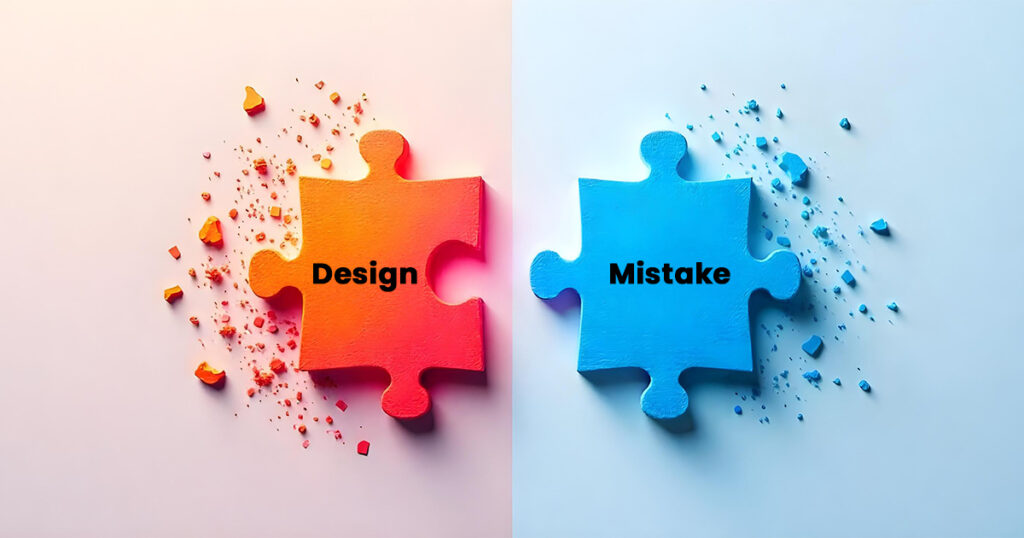
Overcoming Design Mistakes in Branding
Design is the most visible aspect of a brand. While strong design enhances recognition and trust, poor design undermines even the most well-intentioned branding strategies.
Common Branding Design Errors
1. Inconsistent Visual Identity
A lack of alignment across various platforms weakens brand recall. For example, differing fonts on social media posts, websites, and packaging confuse the audience.
2. Overuse of Design Trends
Trends like neon colors or elaborate gradients may look appealing temporarily but often age quickly. Chasing trends can result in a brand that feels inauthentic or inconsistent.
3. Ignoring Cultural and Audience Context
Design choices that fail to align with cultural norms, preferences, or expectations can alienate audiences.
Example: A tech company targeting Gen Z should adopt bold, modern aesthetics, while a luxury brand may opt for minimalism and elegance.
Solutions to Design Challenges
1. Develop a Robust Brand Style Guide
A comprehensive style guide ensures consistency and eliminates guesswork.
Key Elements of a Style Guide:
- Logo Usage: Correct placements, sizes, and variations.
- Color Palette: Define primary, secondary, and accent colors.
- Typography: Specify font families and their hierarchy (headings, body text).
- Imagery Style: Photos, graphics, and illustrations must follow a unified theme.
2. Simplify Designs for Maximum Impact
“Simplicity is the ultimate sophistication.” – Leonardo da Vinci
Minimalistic design improves clarity and ensures a brand remains timeless.
Practical Tips for Simplification:
- Use white space generously to improve focus.
- Avoid excessive text, colors, or effects in visuals.
- Stick to 1–2 fonts and a consistent color scheme.
3. Test Your Designs with Real Audiences
Before rolling out a major visual overhaul, validate it with your audience:
- Conduct A/B tests for ads, emails, or social media graphics.
- Collect feedback from focus groups to ensure designs resonate.
Case Study: Design Overhaul Success
Company: A local bakery business struggling with low recognition.
Challenge: Inconsistent visuals across social media and packaging diluted their brand identity.
Solution: They partnered with WODO to:
- Develop a style guide with a cohesive color palette and custom typography.
- Simplify packaging designs for a clean, memorable look.
- Launch branded social media templates.
Result:
- 50% increase in customer recognition.
- A stronger emotional connection with their audience.
Tools to Streamline Design Consistency
- Canva Pro: Easy templates for social media, presentations, and print materials.
- Adobe Creative Cloud: Professional tools like Illustrator and Photoshop for advanced design.
- Figma: Collaborative design tool for teams.
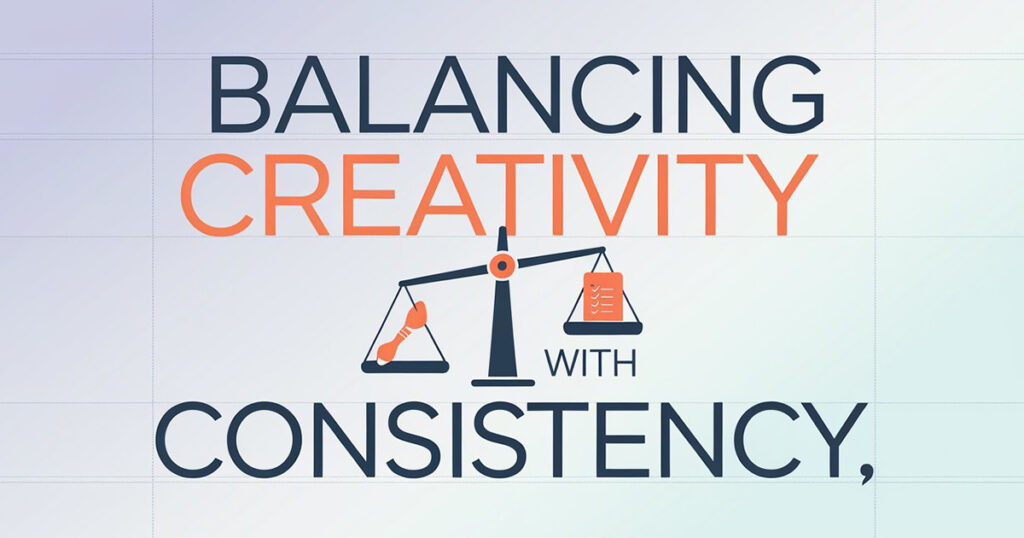
Balancing Creativity with Consistency
Achieving the perfect balance between creativity and consistency is essential for brand success. Creativity allows your brand to stand out, while consistency ensures your audience recognizes and trusts you.
However, many businesses struggle with this balance:
- Too much creativity can lead to a fragmented brand image.
- Excessive focus on consistency may stifle innovation, making the brand feel outdated.
Let’s explore why consistency matters, how to infuse creativity, and practical strategies to achieve the right equilibrium.
Why Consistency is Critical in Branding
Consistency builds a foundation for trust and recognition. When customers repeatedly encounter cohesive messaging, visuals, and tone, it fosters familiarity and confidence in your brand.
Key Benefits of Brand Consistency:
- Improved Recognition: Consistent visuals and messaging make your brand memorable.
- Example: Coca-Cola’s use of red, cursive fonts, and joyful imagery is instantly recognizable.
- Customer Trust: Familiarity breeds trust. When customers see uniformity across touchpoints, they’re more likely to perceive your business as reliable and professional.
- Alignment Across Teams: Consistency ensures that every team—design, marketing, and sales—works toward a unified vision.
Why Creativity is Important for Brand Relevance
Creativity helps brands adapt to new trends, customer expectations, and emerging opportunities. Without creativity, your brand may come across as static or out of touch.
Benefits of Infusing Creativity into Your Branding:
- Innovation and Differentiation: Creative branding sets you apart in a crowded market.
- Audience Engagement: Unique, engaging visuals and campaigns capture your audience’s attention.
- Adaptability: Creative flexibility allows your brand to evolve and stay modern.
How to Balance Creativity with Consistency
Balancing creativity with consistency requires structure. Below are strategies to ensure cohesion while leaving room for innovation:
1. Create Clear Brand Guidelines with Flexibility
- Define your brand’s non-negotiable elements: logo, fonts, colors, and tone of voice.
- Identify areas where creativity can shine, such as ad campaigns, storytelling, or visual experiments.
Example:
Apple maintains strict guidelines for its logo and product design but innovates creatively with campaigns like the “Shot on iPhone” series.
2. Leverage Technology for Brand Management
Digital tools streamline creative work while ensuring it aligns with your brand identity. Tools include:
- Trello or Asana: Manage creative projects with clear workflows.
- Frontify or Bynder: Centralized platforms for managing brand assets and guidelines.
- AI-Powered Platforms: Use AI tools like Adobe Sensei or Canva AI to test creative concepts while maintaining consistency.
3. Set Creative Boundaries
Provide creative teams with clear objectives while encouraging innovation. A few guidelines include:
- Consistency in core visuals (e.g., logo, primary color palette).
- Flexibility in campaign imagery, fonts, or secondary colors.
Example: Spotify’s branding embraces flexibility while maintaining consistency through its bright colors, clean typography, and dynamic layouts.
4. Regularly Audit Your Branding
Conduct periodic audits to ensure your creative experiments align with your brand identity. Ask these questions:
- Are we deviating from our brand guidelines?
- Does the creative work enhance our brand message?
- Is there cohesion across digital and physical platforms?
Practical Tips for Balancing Creativity and Consistency
- Use Templates: Develop branded templates for social media, presentations, and ads to ensure consistency.
- Run A/B Tests: Experiment with creative designs but test them for audience approval before a full rollout.
- Refresh Your Branding Strategically: Keep key brand elements intact while innovating periodically to align with trends.
- Collaborate Across Teams: Ensure marketing, design, and leadership teams are aligned on branding decisions.
Real-World Example: Nike
Nike strikes the perfect balance between creativity and consistency:
- Consistency: Nike’s “Swoosh” logo, black-and-white visuals, and “Just Do It” tagline remain consistent.
- Creativity: They embrace unique campaigns featuring diverse storytelling (e.g., Colin Kaepernick campaign) and localized messaging tailored to markets.
By blending structured consistency with dynamic creativity, Nike remains a leading global brand.
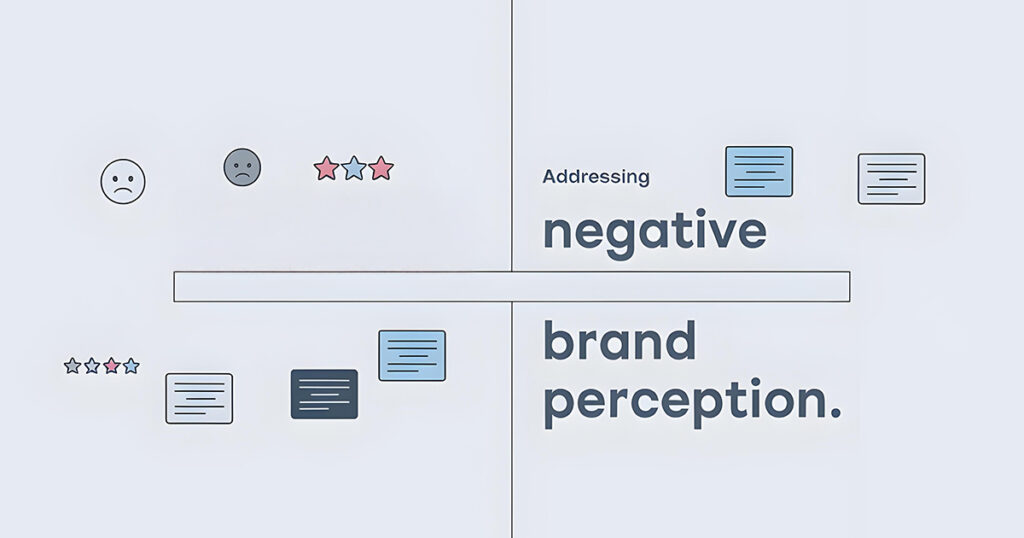
Addressing Negative Brand Perception
Negative brand perception can damage trust, weaken customer loyalty, and impact profitability. Whether it’s due to poor customer service, misleading messaging, or a public crisis, addressing issues promptly is critical.
Causes of Negative Brand Perception
- Poor Customer Service
- Delayed responses, unaddressed complaints, or rude interactions can harm your reputation.
- Example: A customer posting a bad experience on social media can quickly go viral.
- Misleading Messaging
- Overpromising or exaggerating product benefits leads to dissatisfaction and distrust.
- Product or Service Failures
- Faulty products, delayed deliveries, or inconsistent quality frustrate customers and lead to negative reviews.
- Public Relations Crises
- Controversies, ethical missteps, or scandals can tarnish even well-established brands.
- Example: Volkswagen’s emissions scandal caused significant damage to its reputation.
Solutions to Address Negative Brand Perception
1. Acknowledge Mistakes Transparently
Customers value honesty and accountability. When issues arise:
- Own the problem instead of denying it.
- Offer a public apology if necessary, taking full responsibility.
- Highlight how you’ll prevent similar issues in the future.
Example: Johnson & Johnson addressed the Tylenol contamination crisis in the 1980s by recalling products nationwide, prioritizing public safety, and introducing tamper-proof packaging.
2. Proactively Communicate with Customers
Effective communication helps rebuild trust.
- Use social media to share updates and progress on issue resolution.
- Engage with negative reviews and comments empathetically.
- Keep affected customers informed with email updates or press releases.
3. Implement Positive Change
Show customers that you’ve taken action to address their concerns:
- Improve customer service processes (e.g., faster response times).
- Enhance product quality or offer compensation for failures.
- Introduce policies that align with customer expectations.
Example: United Airlines faced backlash after a passenger removal incident but rebuilt trust by implementing new customer-first policies.
4. Leverage Reputation Management Tools
Digital tools help monitor and improve your brand’s online image:
- Google Alerts: Monitor mentions of your brand.
- Reputation Management Platforms like Trustpilot or Brand24 help track reviews and sentiment.
Turning Challenges into Opportunities
Brands that effectively address challenges can turn negativity into a competitive advantage.
Example:
Domino’s Pizza used customer criticism of its product to launch its “Oh Yes We Did” campaign. The brand publicly acknowledged its shortcomings, improved its recipe, and rebuilt customer trust. As a result, Domino’s transformed its image and achieved remarkable growth.
Practical Steps for Rebuilding Trust
- Monitor Customer Sentiment Regularly: Use social listening tools to identify issues before they escalate.
- Train Customer Service Teams: Ensure staff handle complaints professionally and empathetically.
- Respond Quickly: Address concerns promptly to show customers you care.
- Share Success Stories: Highlight case studies, testimonials, and improvements to reinforce positive perceptions.
Case Study: Reputation Recovery Example
Company: A financial services firm faced a PR crisis due to data breaches.
Challenge: Customers lost trust, and the media amplified the issue.
Solution:
- Acknowledged the issue publicly with a clear, apologetic statement.
- Implemented enhanced security measures and communicated updates.
- Shared case studies on new data protection measures through blogs and PR releases.
Results:
- Gradual recovery of customer trust.
- Positive media coverage showcasing the improvements.
Addressing negative brand perception isn’t just about damage control—it’s about using adversity as an opportunity to demonstrate authenticity, transparency, and improvement.
Final Thoughts
By balancing creativity and consistency and addressing challenges head-on, businesses can create resilient brands that thrive. A thoughtful, proactive approach can transform setbacks into opportunities for growth.

How WODO Can Help Your Business
Overcoming branding challenges requires both expertise and strategy. At WODO, we specialize in helping businesses develop strong, cohesive brand identities that stand out.
Our Comprehensive Approach to Branding
- Brand Audits
- We evaluate your existing branding efforts to identify weaknesses and areas for improvement.
- Visual Identity Development
- From logo design to color schemes and typography, we create stunning visuals aligned with your brand’s values and audience preferences.
- Custom Brand Guidelines
- Our team develops detailed style guides to ensure consistency across all platforms.
- Reputation Management
- We tackle negative brand perceptions by implementing proactive strategies that rebuild customer trust.
Why Choose WODO?
- Expertise: Years of experience delivering impactful branding solutions.
- Tailored Strategies: Solutions customized to align with your goals and audience.
- Innovative Tools: We leverage cutting-edge technologies to ensure success.
Let WODO transform your brand into a recognizable, trusted identity that drives long-term growth.
Frequently Asked Questions (FAQ)
1. What are the most common branding mistakes?
The most common mistakes include inconsistent visuals, overusing design trends, and ignoring audience preferences.
2. How do I balance creativity and brand consistency?
Set clear guidelines to allow creative freedom while ensuring brand cohesion.
3. What steps can I take to handle negative brand perception?
Acknowledge mistakes, communicate openly, and highlight positive changes you’ve implemented.
4. How does WODO improve branding?
WODO offers comprehensive services, including brand audits, visual identity development, and reputation management, tailored to your specific needs.
5. How often should I refresh my brand identity?
Brands should review their identity every 3-5 years or whenever a major shift occurs in their market, audience, or business strategy.
Conclusion
Branding is the heartbeat of your business. While challenges like design errors, balancing creativity, and managing perceptions are inevitable, they are not insurmountable. By implementing actionable strategies, you can build a consistent, impactful brand that resonates with your audience.
For businesses seeking expert assistance, WODO’s Design and Branding Services provide the tools, expertise, and tailored strategies to elevate your brand. From comprehensive audits to stunning visual identity creation, WODO helps you stand out in a crowded market.
Ready to transform your branding? Contact WODO today and let us guide you toward a stronger, unified brand that drives long-term success.

